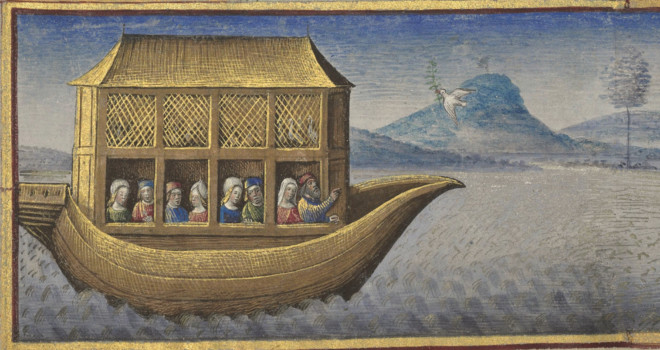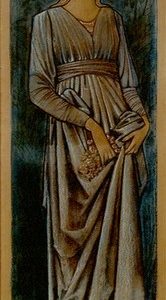The great flood story from Genesis 6-8 has been widely debated among theologians with regards to accuracy and authenticity. The Catholic Church neither requires or prohibits a worldwide flood to be interpreted from Sacred Scripture. Rather, the Church understands these accounts to be translated with “simple and metaphorical language adapted to the mentality of a people but little cultured, both state the principal truths which are fundamental for our salvation, and also give a popular description of the origin of the human race and the chosen people.” (Pope Pius II, Humani Generis, 38)
Okay – so, Catholics can interpret Genesis 6-8 as accurate, poetic, or both. What about non-biblical, ancient historical records? If there was a worldwide flood, wouldn’t there be similar accounts among early tribes and indeginous peoples? Upon digging a little deeper, what we find is that virtually every ancient civilization, from every living continent, has a great flood story inculcated within their ancient mythology. In fact, when early missionaries spread out to all nations to preach the Gospel, they were shocked to discover these societies to have their own accounts of a great flood. These were cross-continental, isolated groups; having never fraternized with each other to transmit stories or tales. Consider this list of ancient civilizations, and some of their stories:
Africa:
The Kwaya, Mbuti, Maasai, Mandin, Yoruba, and Egyptian peoples.
The flood story among Egyptian legends centers around the god, Ra, and his daughter, Sekhmet. Ra sent Sekhmet to destroy humanity because of their unfaithfulness. In the end, Ra intervened by causing Sekhmet to become drunk and fall asleep. This event was commemorated with a wine drinking festival during the annual Nile flood season.
Asia:
The Sumerian, Mesopotamian, Abrahamic, Chinese, Indian, Korea, Malaysia, Philippines, Thailand, Taiwan peoples.
There is a striking tale that comes from India concerning two characters: Matsya (the incarnation of Lord Vishnu as a fish) and Manu (human). Mastya warns Manu of a destructive flood and orders him to collect all the grains of the world into a large boat. In some variations of the story, all living creatures were instructed to be collected and placed on the boat. After the flood destroys the land, Mastya pulls the boat ashore to safety.
Europe:
The Ancient Greek, Irish, Welsh, Norse, Bashkir, Finish peoples.
An ancient Welsh legend describes the story of Afanc, a lake-monster called Llyn Llion. Afanc causes a huge flood. Two humans, Dwyfan and Dwyfach, were the only survivors. They constructed an ark-like boat called Nefyd Naf Neifion, which carried a pair of each species.
North America:
The Choctaw, Ojibwe, Menomini, Mi’kmaq, Anishinabe, Ottowa, Cree, Nipmuc, W̱SÁNEĆ, Comox, Inuit, Eskimo peoples.
Christian missionaries evangelized to the Native American people and discovered a fascinating story that existed within the Choctaw tribes. The legend describes a great period of darkness that covered the lands. The elders of the tribe kept watch for daylight for some time before finally succumbing to despair. At last, light was discovered in the northern skies. The entire nation rejoiced until they spotted great mountains of water rolling over the lands. Everyone was destroyed, except for a few families who had anticipated the waters and constructed a large raft for safety.
Oceana:
The Polynesian, Hawaiian, Nu’u, Ruatapu, Tawhaki peoples.
In Hawaiian lore, Nu’u was a man who constructed an ark with which he escaped a Great Flood. After the deluge, his large boat rested on top of a mountain on the island of Mauna Kea. Nu’u naively attributed his survival to the moon, and offered sacrifice to it. Kāne, the creator god, descended to earth on a rainbow and corrected Nu’u’s mistake.
South America:
The Canari, Inca, Mapuche, Muisca, Tupi peoples.
Incan legend says that the creator god, Viracocha, sends a large flood to destroy the people around Lake Titicaca. Two people are saved to populate the rest of the world. Some versions of the story have a surviving man and woman floating to Lake Titicaca in a box made of wood.
The similarities to the Noah story from the book of Genesis are uncanny: A world full of unfaithful people (Genesis: 6:5); the construction of an ark made of wood (Gen. 6:15); the gathering of each animal in twos along with grains and food (Gen. 6:19-21); a post-flood sacrificial offering (Gen. 8:20); a rainbow carrying a sign from God (Gen. 9:13). These incredible stories from isolated civilizations on earth make a compelling case for a historic, worldwide flood.
Jesus himself confirms the account of Noah and the flood: “As the days of Noah were, so the coming of the Son of Man will be. For in those days before the flood they were eating and drinking, marrying and giving in marriage, until the day Noah boarded the ark. They didn’t know until the flood came and swept them all away.” (Matthew 24:37-39)
God perpetuates His covenant through His servant, Noah. The family of Noah grows to a tribe (Abraham), which grows to a nation (Moses), which grows to a kingdom (David), which grows to a Church (Jesus). The Catholic Church is the fulfilled ark, which will lead us to the saving shores of heaven. Jump aboard!
✠
image: illuminated manuscript of Noah’s Ark (15th century) Jean Colombe, Public domain, via Wikimedia Commons












